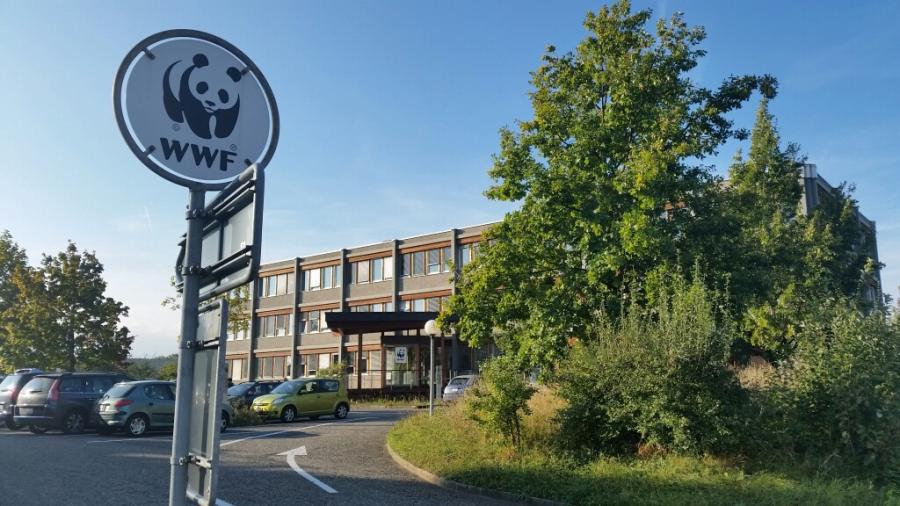
WWF International, Gland, Switzerland. Photo courtesy David Gill
Billions of people around the world rely on fish and other marine resources for food and income. However, the health of our oceans and waterways is under threat from human activities—and those in developing countries, many of whom depend upon these resources as their primary source of protein and livelihood, are bearing the brunt of adverse impacts on marine ecosystems.
In response, there has been a surge in the investment and expansion of place-based conservation initiatives, with internationally-agreed upon targets for global conservation coverage (e.g., 10% Aichi Biodiversity Target 11). Marine protected areas (MPAs) have been hailed as a means of achieving these targets and of contributing to the conservation and restoration of social, economic, and cultural marine resources.
Currently, just over 3% of the world’s oceans are protected by MPAs. (Thomas et al. 2014) As the global community moves toward the 10% Aichi target, what do we know about the 3%? Are they delivering the social and ecological benefits they were designed to provide? If not, why? These are critical questions that need to be answered if we are going to effectively protect marine ecosystems and species through management strategies such as MPAs.
And it’s precisely these questions that motivate the current research carried out by Dr. David Gill, a postdoctoral fellow collaboratively supported by the National Socio-Environmental Synthesis Center (SESYNC) and the Luc Hoffmann Institute. David works with the SESYNC Pursuit “Solving the Mystery of Marine Protected Area (MPA) Performance,” which brings together a diverse group of marine scientists, governance scholars, database developers, and management experts working toward an understanding of the relationship between how we govern MPAs and their capacity to deliver ecological and social benefits. Led by Drs. Helen Fox, Robert Pomeroy, and Michael Mascia, the project is compiling and analyzing social, biophysical, and governance data from MPAs across the globe to facilitate cross-site comparisons.
The project is significant largely due to its scope. “To effectively answer questions about MPA performance and to inform effective conservation strategies and practices, we’re compiling data on MPAs from different disciplines at a global scale,” David said. “For these datasets, that’s never been done before. To understand performance at such a large scale, we need considerable support and input from experts in various geographies and disciplines.”
“Leveraging data from 14,500-plus underwater surveys, we have information on the ecological effectiveness of more than 250 MPAs in 45 countries around the world,” he added.
As part of this collaboration between SESYNC and the Luc Hoffmann Institute, David recently made his inaugural trip to the Institute’s headquarters in Switzerland to meet with the Institute’s team, including those within the Place Based Conservation Programme and Fellows Programme. The trip afforded David the chance to learn more about the Luc Hoffmann Institute’s focus on science-to-policy by bridging the academic and practitioner divide—a priority reminiscent of SESYNC’s emphasis on actionable science.
Collaborating with SESYNC through the MPA Pursuit was an intuitive synergy for the Luc Hoffmann Institute because of the project’s implications for areas where conservation science leadership is most needed. Marine ecosystem services play a critical role in the economies of many developing countries, contributing to livelihoods and food security for millions. Yet many MPA managers, especially those in developing countries, struggle to effectively store, manage, process, and analyze monitoring data. Under the leadership of the Pursuit PIs and with crucial support from David, the SESYNC project is working toward the development of tools and standards that would address this critical need.
The National Socio-Environmental Synthesis Center, funded through a National Science Foundation grant to the University of Maryland and located in Annapolis, Maryland, United States, is a research center dedicated to solving complex problems at the intersection of human and ecological systems. Visit www.sesync.org for more information.
The Luc Hoffmann Institute is an independent research hub at WWF based in Gland, Switzerland. The aim is to explore complex conservation research questions and work with the WWF global network and partners to bring science to action. Visit www.luchoffmanninstitute.org for more information.